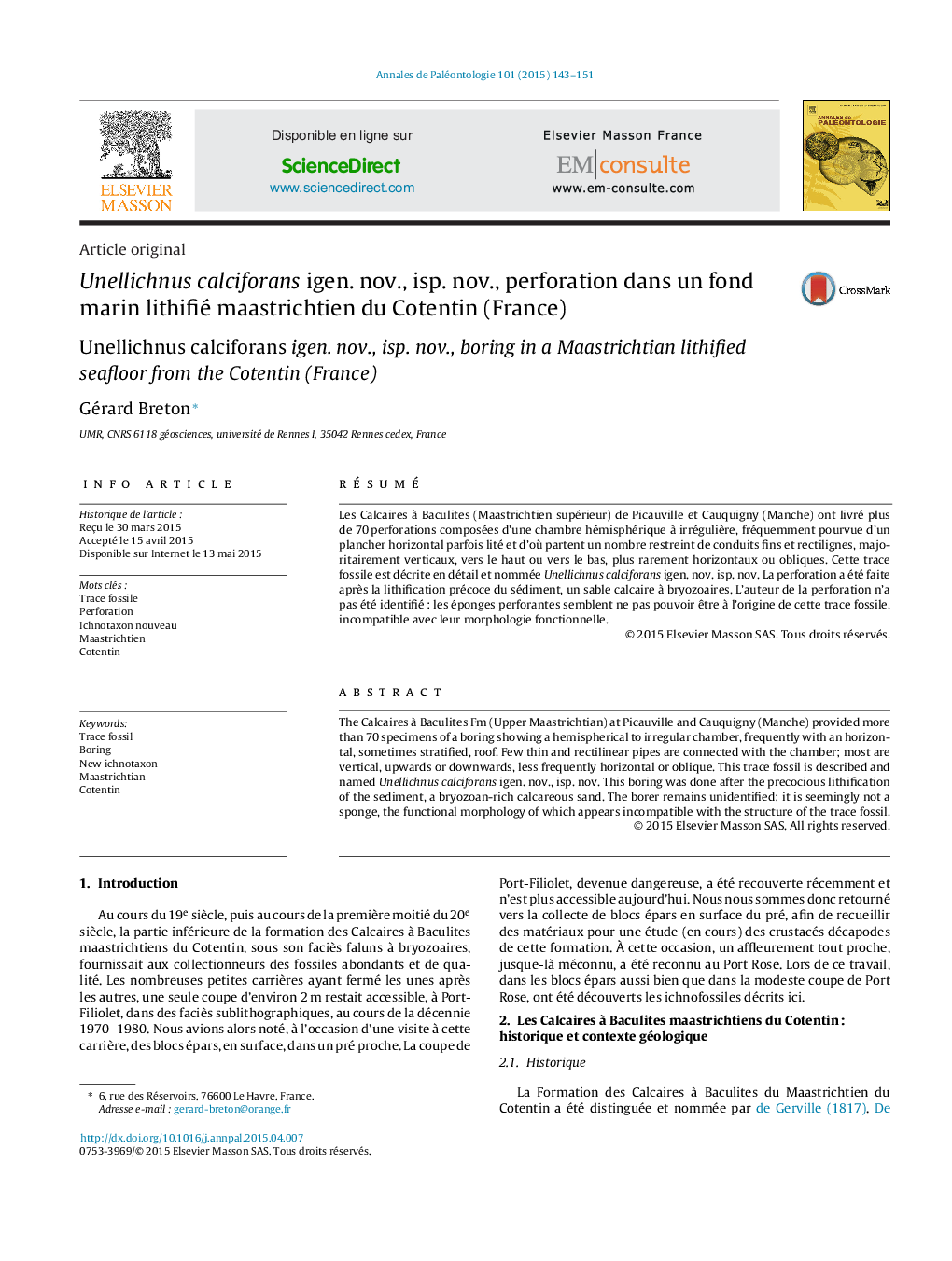| Article ID | Journal | Published Year | Pages | File Type |
|---|---|---|---|---|
| 4745246 | Annales de Paléontologie | 2015 | 9 Pages |
RésuméLes Calcaires à Baculites (Maastrichtien supérieur) de Picauville et Cauquigny (Manche) ont livré plus de 70 perforations composées d’une chambre hémisphérique à irrégulière, fréquemment pourvue d’un plancher horizontal parfois lité et d’où partent un nombre restreint de conduits fins et rectilignes, majoritairement verticaux, vers le haut ou vers le bas, plus rarement horizontaux ou obliques. Cette trace fossile est décrite en détail et nommée Unellichnus calciforans igen. nov. isp. nov. La perforation a été faite après la lithification précoce du sédiment, un sable calcaire à bryozoaires. L’auteur de la perforation n’a pas été identifié : les éponges perforantes semblent ne pas pouvoir être à l’origine de cette trace fossile, incompatible avec leur morphologie fonctionnelle.
The Calcaires à Baculites Fm (Upper Maastrichtian) at Picauville and Cauquigny (Manche) provided more than 70 specimens of a boring showing a hemispherical to irregular chamber, frequently with an horizontal, sometimes stratified, roof. Few thin and rectilinear pipes are connected with the chamber; most are vertical, upwards or downwards, less frequently horizontal or oblique. This trace fossil is described and named Unellichnus calciforans igen. nov., isp. nov. This boring was done after the precocious lithification of the sediment, a bryozoan-rich calcareous sand. The borer remains unidentified: it is seemingly not a sponge, the functional morphology of which appears incompatible with the structure of the trace fossil.
